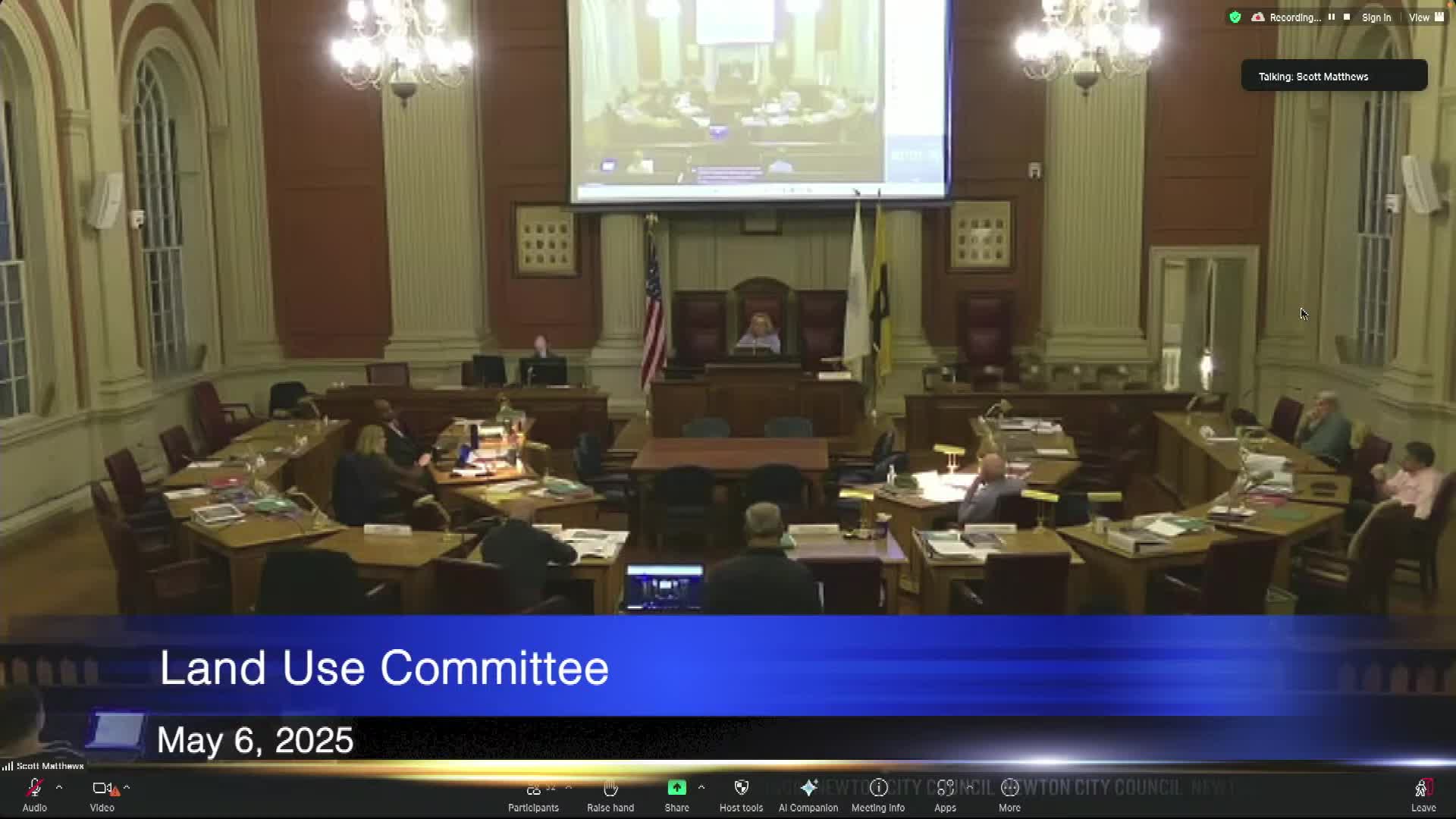City Council holds public hearing on controversial housing design proposal
May 07, 2025 | Newton City, Middlesex County, Massachusetts
This article was created by AI summarizing key points discussed. AI makes mistakes, so for full details and context, please refer to the video of the full meeting. Please report any errors so we can fix them. Report an error »

In the heart of Newton City, the Land Use Committee convened on May 6, 2025, to address pressing concerns surrounding a proposed residential development that has stirred significant debate among local residents. As the meeting unfolded, the atmosphere was charged with a mix of anticipation and apprehension, reflecting the community's deep investment in the character of their neighborhood.
Central to the discussions was a proposed new structure that many attendees felt clashed with the existing architectural style of the street. Councilor Block emphasized the importance of preserving the historic nature of the current house, urging planning officials to provide a qualitative assessment of how the new design would integrate with its surroundings. “It’s not just an FAR comparison,” he noted, highlighting the need for a broader evaluation of the project’s impact on the neighborhood.
Concerns about neighbor engagement were also prominent. Several committee members, including Councilor Lobovitz, called for the property owner to reach out to residents with a clear design in hand, fostering a dialogue that could address community apprehensions. The sentiment was echoed by Mary Lee Belleville, a local resident, who pointed out discrepancies in the proposed floor area ratio (FAR) and questioned the necessity of a special permit for a two-family zoning area. “It could be designed and built within the constraints of the current zoning,” she argued, advocating for a solution that aligns with community needs.
Wesley Garner, a neighbor directly affected by the proposed changes, voiced his frustrations regarding the lack of communication from the developers. He described the current state of the property as disheveled, with subletters leaving it in disarray, and expressed a desire for more proactive engagement from the developers. “We have attempted to get in touch with the developers. We have not been able to,” he lamented, underscoring the disconnect between the developers and the community.
As the meeting progressed, technical questions arose regarding tree protection and the architectural design of the new structure. Councilor Malachy raised concerns about the preservation of a significant tree on the property line, while also questioning the unusual orientation of the proposed building. The developer, Mr. Patel, explained that engineering challenges had influenced the design, but many committee members remained skeptical about its fit within the neighborhood.
In a decisive move, the committee voted unanimously to keep the public hearing open, allowing for further discussion and community input before any final decisions are made. The commitment to ongoing dialogue reflects a broader understanding of the importance of community involvement in land use decisions, ensuring that the voices of residents are heard as the city navigates the complexities of development and preservation.
As the meeting adjourned, it was clear that the path forward would require careful consideration of both the architectural vision and the community’s values, setting the stage for continued engagement in the weeks to come.
Central to the discussions was a proposed new structure that many attendees felt clashed with the existing architectural style of the street. Councilor Block emphasized the importance of preserving the historic nature of the current house, urging planning officials to provide a qualitative assessment of how the new design would integrate with its surroundings. “It’s not just an FAR comparison,” he noted, highlighting the need for a broader evaluation of the project’s impact on the neighborhood.
Concerns about neighbor engagement were also prominent. Several committee members, including Councilor Lobovitz, called for the property owner to reach out to residents with a clear design in hand, fostering a dialogue that could address community apprehensions. The sentiment was echoed by Mary Lee Belleville, a local resident, who pointed out discrepancies in the proposed floor area ratio (FAR) and questioned the necessity of a special permit for a two-family zoning area. “It could be designed and built within the constraints of the current zoning,” she argued, advocating for a solution that aligns with community needs.
Wesley Garner, a neighbor directly affected by the proposed changes, voiced his frustrations regarding the lack of communication from the developers. He described the current state of the property as disheveled, with subletters leaving it in disarray, and expressed a desire for more proactive engagement from the developers. “We have attempted to get in touch with the developers. We have not been able to,” he lamented, underscoring the disconnect between the developers and the community.
As the meeting progressed, technical questions arose regarding tree protection and the architectural design of the new structure. Councilor Malachy raised concerns about the preservation of a significant tree on the property line, while also questioning the unusual orientation of the proposed building. The developer, Mr. Patel, explained that engineering challenges had influenced the design, but many committee members remained skeptical about its fit within the neighborhood.
In a decisive move, the committee voted unanimously to keep the public hearing open, allowing for further discussion and community input before any final decisions are made. The commitment to ongoing dialogue reflects a broader understanding of the importance of community involvement in land use decisions, ensuring that the voices of residents are heard as the city navigates the complexities of development and preservation.
As the meeting adjourned, it was clear that the path forward would require careful consideration of both the architectural vision and the community’s values, setting the stage for continued engagement in the weeks to come.
View full meeting
This article is based on a recent meeting—watch the full video and explore the complete transcript for deeper insights into the discussion.
View full meeting
